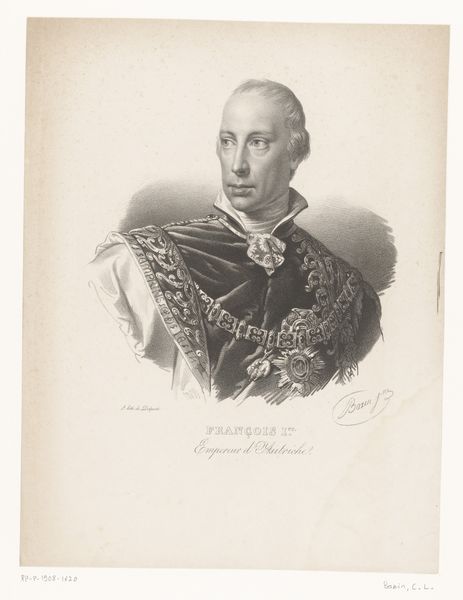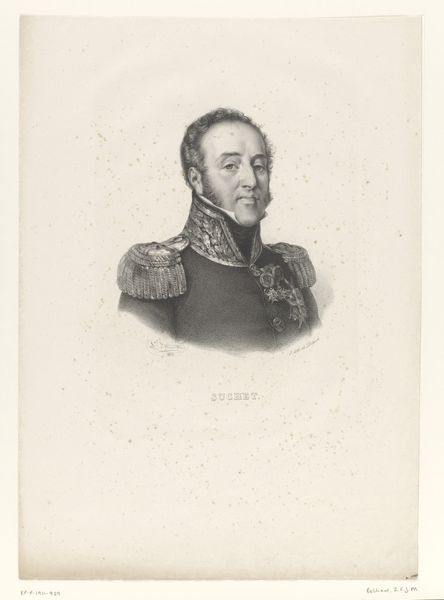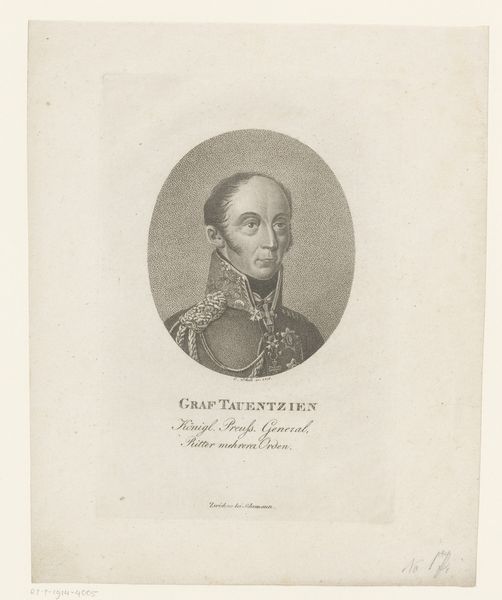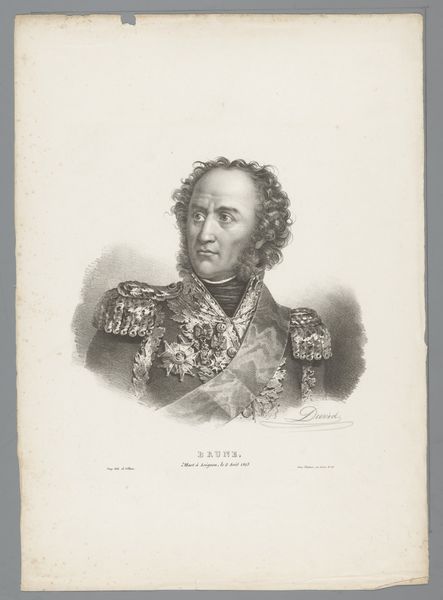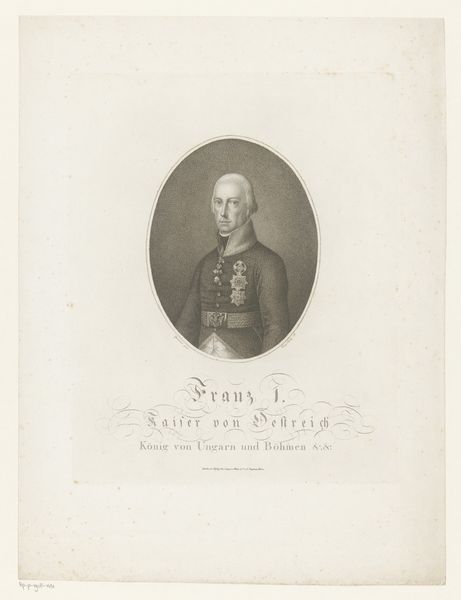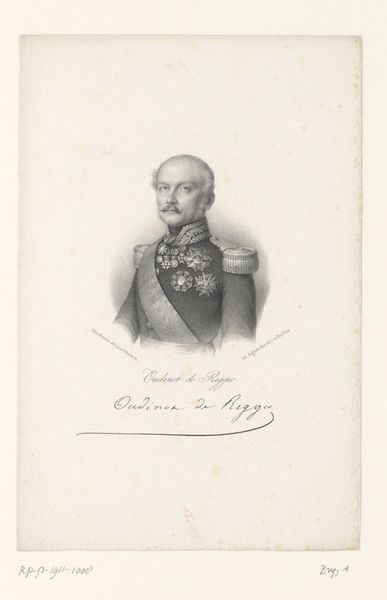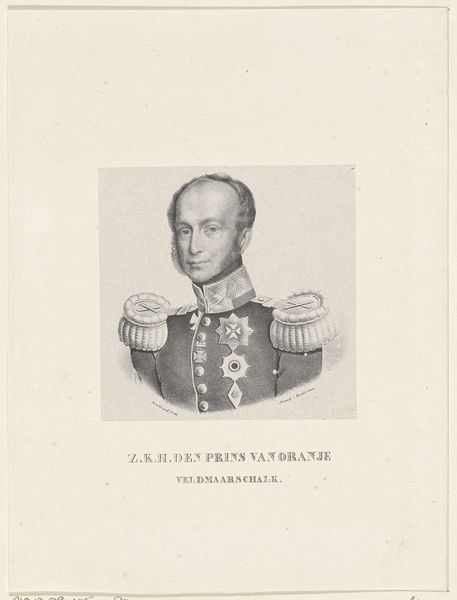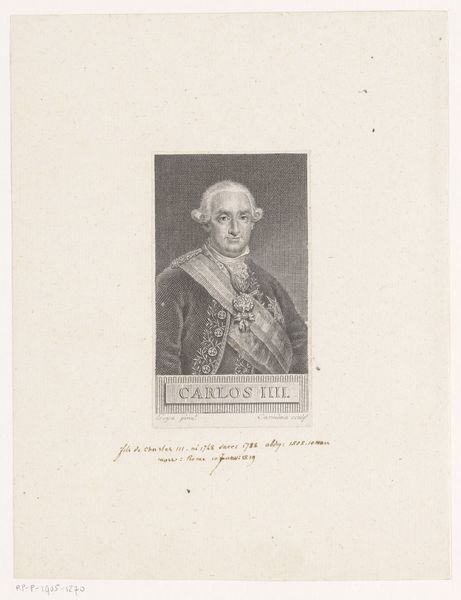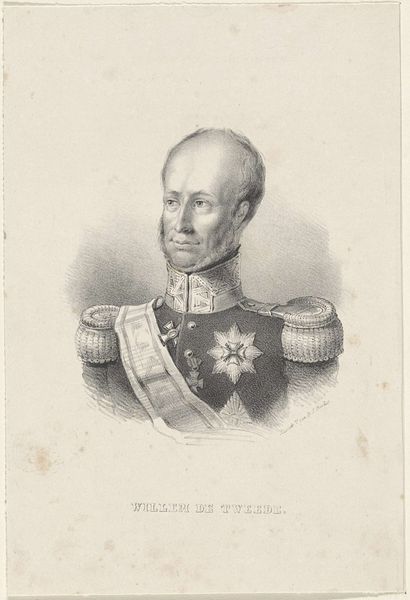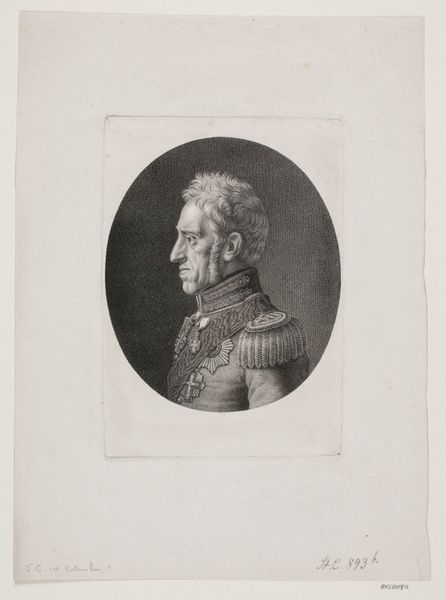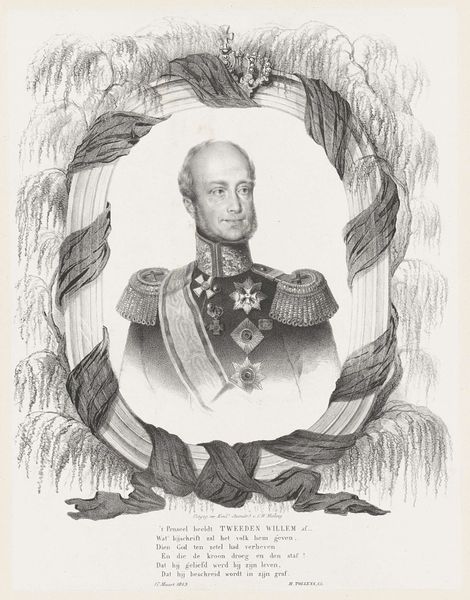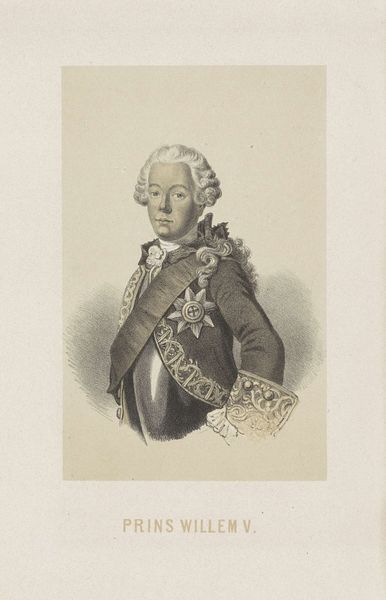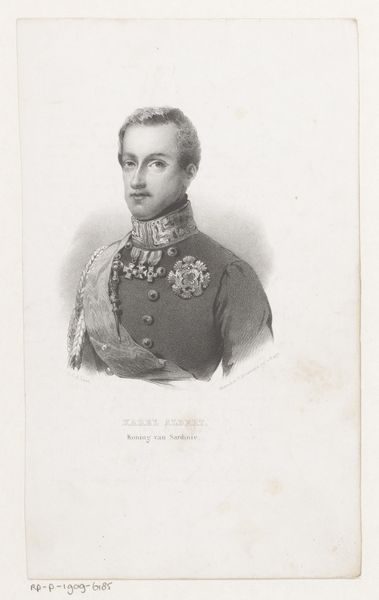
Portret van Frans I, keizer van Oostenrijk 1824 - 1849
print, graphite
portrait
neoclacissism
graphite
academic-art
graphite
Dimensions: height 275 mm, width 194 mm
Copyright: Rijks Museum: Open Domain
Editor: Here we have a print made with graphite titled "Portret van Frans I, keizer van Oostenrijk," dating from 1824 to 1849, and it's part of the Rijksmuseum's collection. The precision in the details of his royal attire are quite striking. What can you tell me about it? Curator: This print compels us to examine the material conditions and labor inherent in its production and consumption. The choice of graphite for a portrait intended to represent imperial power, for example, speaks volumes. It’s a reproducible medium, and in examining this choice, how can this portrait be interpreted in terms of access and dissemination? Editor: That's an interesting perspective. I hadn't considered graphite as a choice beyond aesthetics. Were prints common ways of portraying rulers at the time? Curator: Precisely! Prints, unlike unique paintings, facilitated broader access. This raises critical questions about the image of the emperor—was this image made to make him seem relatable, through this "humble" medium, or to participate in larger consumption economies and artistic value systems? Consider also the labor involved in producing multiples. What kind of social narratives do prints facilitate and spread? Editor: I see, so you are drawing attention to the role of the artist as a craftsman reproducing images and the socioeconomic implications of printmaking, rather than the Emperor himself. This completely changes my perspective! Curator: Exactly. And by extension, we can explore its place within the art market, in distribution and in its effect on popular consciousness. Examining the artwork this way allows us to move beyond the individual depicted and understand its value within the broader structures of society and material culture. Editor: I had not considered this artistic choice as a democratizing medium, produced for a different consumer than, say, an oil painting. It is so interesting to observe beyond the surface! Curator: Absolutely! Seeing the intersection of medium, maker and market truly enriches our perception of not just the portrait, but society at the time of its making.
Comments
No comments
Be the first to comment and join the conversation on the ultimate creative platform.
